Ælfgif-who? provides short biographies of early medieval English women. Click on the podcast player if you’d like to hear this newsletter read aloud in my appealing Yorkshire accent.

Raedwald's Queen or the Mound 14 Dowager: The Woman Responsible for the Burial at Sutton Hoo?
For the first time in twenty seven Ælfgif-who? biographies, I’ve reluctantly had to title this one with a man’s name, and not a woman’s. Raedwald was the first king of East Anglia in the early seventh century, and a likely candidate for the East Anglian ship burial at Sutton Hoo. His wife features in two stories in Bede’s Ecclesiastical History, but she is never actually named. While unfortunate, that probably tells us something important about the way the women in Bede’s narratives often exist to elucidate stories about ‘great men’. There are some exceptions to this - and see my biographies of Hild and Æthelthryth if you don’t believe me - but these are saintly Christian women. According to Bede, Raedwald’s wife was a pagan.
Indeed, in one story, Raedwald's pagan wife is portrayed by Bede as dissuading him from Christian worship after his conversion:1
He was seduced by his wife and by certain evil teachers and perverted from the sincerity of his faith, […] serving both Christ and the gods whom he had previously served. In the same temple he had one altar for the Christian sacrifice and another small altar on which to offer victims to devils.
Though Raedwald's wife is portrayed as a corrupter, this narrative reveals to us that during the conversion process Christian and non-Christian worship could be practiced simultaneously.
In another episode in Bede's Ecclesiastical History we see Raedwald's wife in a different and more positive light. She dissuades her husband from dishonourably murdering a young Edwin of Northumbria, who is taking refuge at the East Anglian court, a merciful and politically astute act which leads to King Edwin's eventual conversion to Christianity by Paulinus.
As Bede's intention wasn't to shed light on the roles of royal women, we must extrapolate from the evidence. In one story, she is the pagan wife persuading her husband to return to his pre-Christian religious practices, which for the monk Bede is a corrupting influence. In the other story, she is the merciful wife who saves a man and allows him to convert. Although Bede’s portrayal of her is complex, in both instances she is a persuasive figure who exerts a great degree of influence over her powerful husband.
King Raedwald has gained some fame in recent years for his association with Sutton Hoo. Sutton Hoo, in modern Suffolk, is the location of an early seventh-century cemetery that contains around twenty burial mounds (see below) and dozens of other burials. This site is famous for its two ship Burials, probably the most elaborate burials in the history of Britain.
The richest of the burials at Sutton Hoo is the 90ft Ship Burial in Mound 1. While some of the burial mounds had been robbed over the centuries, Mound 1 remained intact. This mound was excavated in 1939, which was recently depicted in the 2021 film The Dig (which I will be reviewing for paid subscribers in a few days time). This burial also contained luxurious grave goods, some of which were Byzantine and North African, demonstrating that seventh-century society was advanced in both trade and craftsmanship. While no human remains have survived in the acidic soil, it has been deduced that this huge burial ship contained the body of a powerful and wealthy figure. The combination of non-Christian ceremonial practice and Christian finds at this site suggest that whomever was buried there existed between two belief systems; paired with the dating of the site determined by coins in the mound, Raedwald is a likely candidate.
But what of Raedwald’s queen? A theory has been put forward, most notably by Professor Martin Carver in his 2017 book The Sutton Hoo Story (affiliate link), is that Raedwald’s wife and queen may have been the orchestrator of the elaborate burials at Sutton Hoo. As Carver puts it:
…One can imagine that Raedwald’s queen was the person responsible for the direction and composition of the funeral. Judging by Mound 1, this would have been an occasion when power politics, international relations, a nod to the ancestors and a confrontation of fate were combined in a material eulogy that must have been unforgettable to those that saw it. The spectacle was devised in weapons, feasting equipment and regalia, shimmering with gold and silver, ornamented with rampant animals, real and unreal. But the burial also contained fine cloaks, spare shoes, clean linen and a shaving kit. The person who devised it was concerned to maintain both the independence and dignity of the new kingdom and the intimate memory of a man.
Only one mound at Sutton Hoo has been deduced as the burial of a woman. Mound 14 is unfortunately one of the mounds that has had its goods ransacked, but archaeological evidence suggests that the robbery was cut short by a torrent of rain, which prevented some of the goods from being taken. A key chain left behind, typical of female graves in this period, demonstrates the grave belonged to a wealthy woman. She was buried lying on some sort of bed, in a grave lined with timber, and her other surviving grave goods include dress fittings, buckles, a bowl and a cup. Fragments of textile also survive, indicating that she was dressed luxuriously - linen with woollen embroidery, similar to that found on the Frankish Queen Balthild - as well as evidence of a linen chemise and linen gown, both with embroidered cuffs. Notably, unlike in Mound 1, in which some items were decorated with Christian symbols, there is nothing that would suggest the burial is Christian. If we consider that the woman buried in this mound could be Raedwald’s wife, the respective dating of both mounds allows for her to have outlived him and died at around 60-70 years old. While hypothetical, this is feasible.
Admittedly, the queen and the Mound 14 dowager mentioned in the title of this biography may be two separate historical women, but they also may be the same person. Raedwald is the most likely candidate for the man in Mound 1, and though evidence of his wife’s involvement rests on conjecture, Raedwald’s wife is the only candidate put forward for the woman in Mound 14. Moreover, if Raedwald’s queen is not the high-status East Anglian woman in the grave, it was surely someone she knew or was connected to. And there is certainly a strength of character reflected in Bede's portrayal of this unnamed queen that demonstrates she would have been capable of putting together such a political event as this burial.
Recommended Reading:
The Women of Sutton Hoo (Informative online article by The Past)
Bede’s Ecclesiastical History of the English People trans. Colgrave and Mynors (affiliate link).

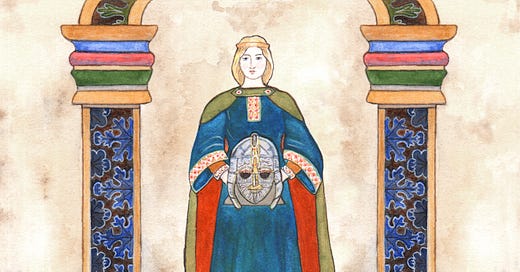



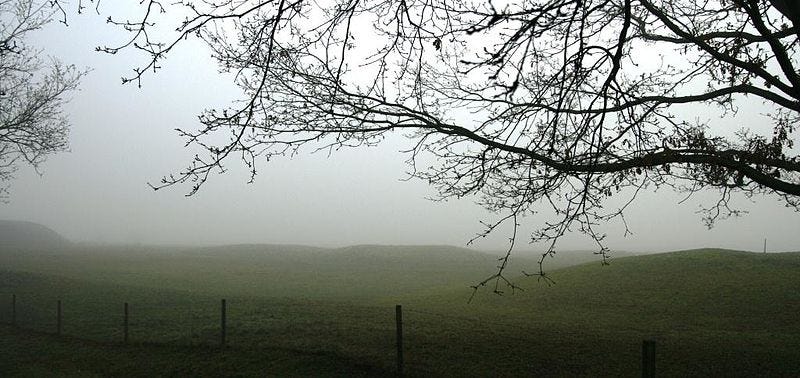
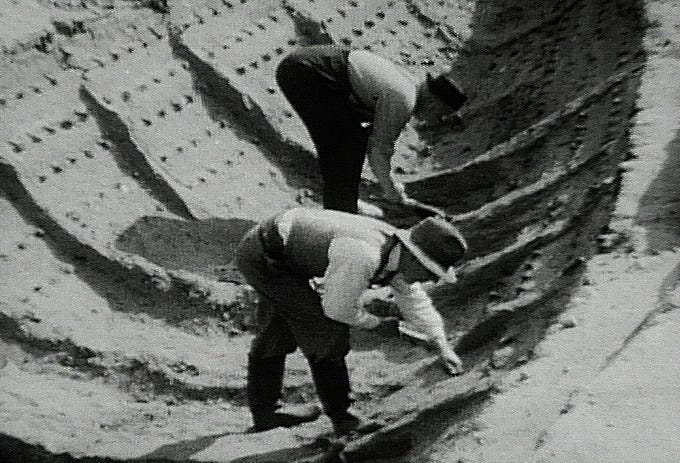

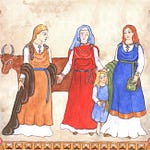
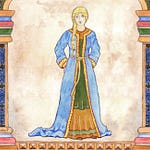
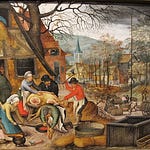
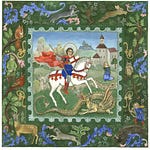



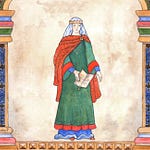
Share this post